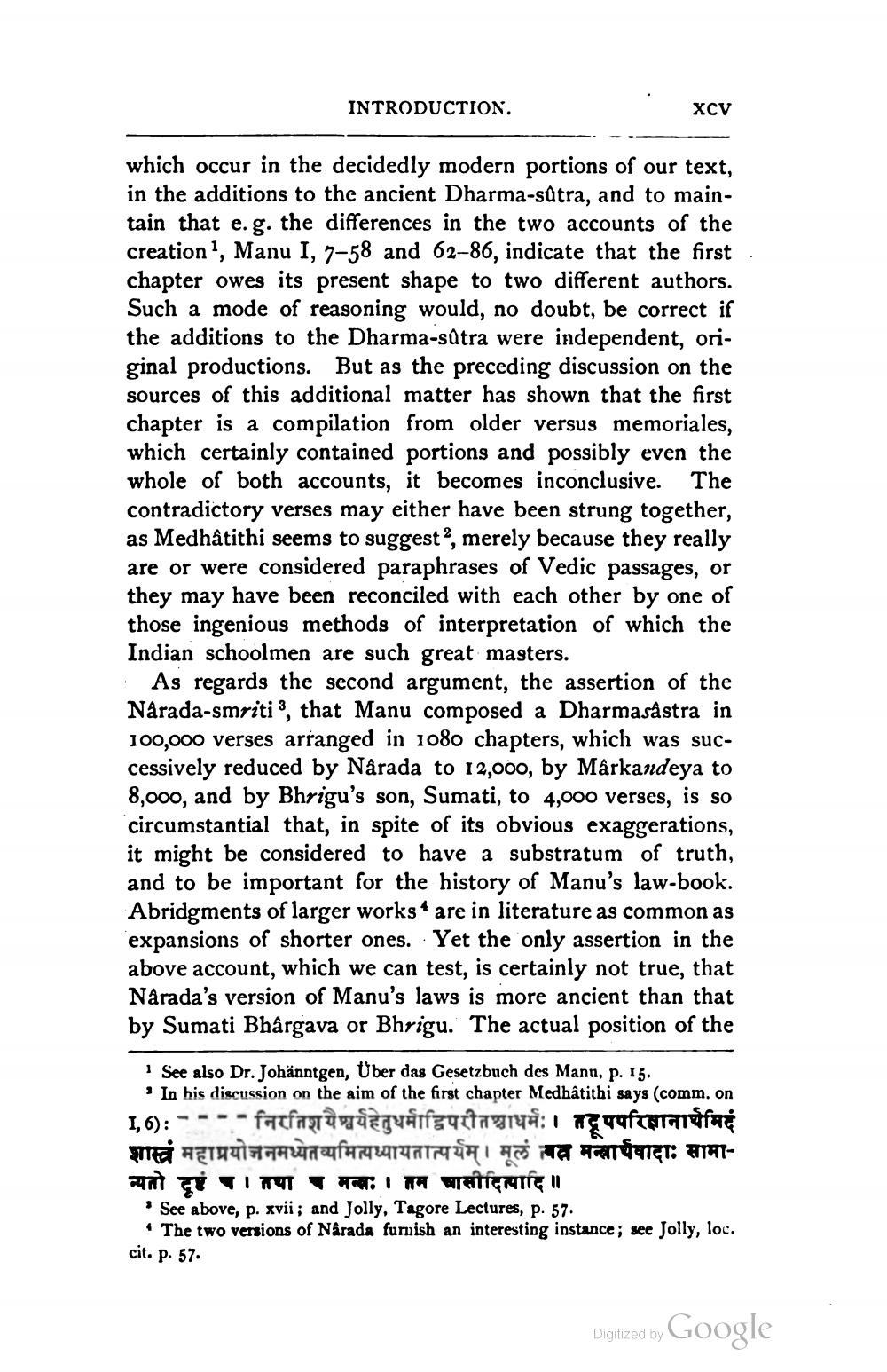________________
INTRODUCTION.
XCV
which occur in the decidedly modern portions of our text, in the additions to the ancient Dharma-sútra, and to maintain that e.g. the differences in the two accounts of the creation", Manu I, 7-58 and 62-86, indicate that the first chapter owes its present shape to two different authors. Such a mode of reasoning would, no doubt, be correct if the additions to the Dharma-sätra were independent, original productions. But as the preceding discussion on the sources of this additional matter has shown that the first chapter is a compilation from older versus memoriales, which certainly contained portions and possibly even the
accounts, it becomes inconclusive. The contradictory verses may either have been strung together, as Medhâtithi seems to suggest?, merely because they really are or were considered paraphrases of Vedic passages, or they may have been reconciled with each other by one of those ingenious methods of interpretation of which the Indian schoolmen are such great masters. : As regards the second argument, the assertion of the Narada-smriti, that Manu composed a Dharmasastra in 100,000 verses arranged in 1080 chapters, which was successively reduced by Närada to 12,000, by Markandeya to 8,000, and by Bhrigu's son, Sumati, to 4,000 verses, is so circumstantial that, in spite of its obvious exaggerations, it might be considered to have a substratum of truth, and to be important for the history of Manu's law-book. Abridgments of larger works are in literature as common as expansions of shorter ones. Yet the only assertion in the above account, which we can test, is certainly not true, that Nárada's version of Manu's laws is more ancient than that by Sumati Bhargava or Bhrigu. The actual position of the
See also Dr. Johänntgen, Uber das Gesetzbuch des Manu, p. 15. ' In his discussion on the aim of the first chapter Medhâtithi says (comm. on 1,6): -- --faciagaudaTvårfattaniyd: Tovufnandia शास्त्रं महाप्रयोजनमध्येतव्यमित्यध्यायतात्पर्यम्। मूलं वन मन्त्रार्थवादाः सामान्यतो दुई । तथा च मन्नः । तम पासीदित्यादि ॥ • See above, p. xvii; and Jolly, Tagore Lectures, p. 57.
The two versions of Narada furnish an interesting instance; see Jolly, loc. cit. p. 57.
Digitized by Google




